You may be considering a makeover for your home, or perhaps you’re just brimming with curiosity about interior design styles.
Whichever camp you belong to, this comprehensive guide will help you navigate the often overwhelming landscape of decor options available to you.
From minimal modern aesthetics to rustic farmhouse appeal, we’ve rounded up a list of 50 top interior design styles worth considering.
This is your go-to manual for crafting a space that’s uniquely yours, resonating with your personal style, and making your home not just aesthetically pleasing but also functional and comfortable.
We’re delving into every viable category, sharing crucial insights so that you can discern which style aligns well with your lifestyle, taste, and aspirations.
Hold on tight as we embark on this exciting journey through the world of design – where form meets function in the most visually stunning possible way.
Contents
Interior design is an art form that transforms spaces into aesthetic, functional havens, reflecting individual tastes and lifestyles.
This list of the 50 Best Interior Design Styles offers a comprehensive guide to the most revered and innovative design aesthetics in the world.
Each style, unique in its approach, harmoniously blends elements like color, texture, and layout to create distinct atmospheres ranging from the minimalistic to the extravagantly ornate.
Whether seeking inspiration for a home renovation or simply exploring the diversity of interior design, this compilation provides a window into the world of creative and personalized space curation.
Bauhaus style, born in early 20th-century Germany, is a testament to functionality meeting art. It emphasizes clean lines, rational use of materials, and a harmonious blend of technology and design.
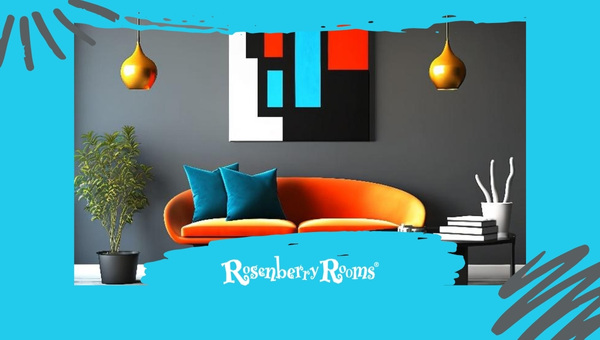
Characterized by its lack of ornamentation and focus on geometric forms, Bauhaus interiors often feature a blend of steel, glass, and concrete, complemented by bold color accents.
Furniture in this style is sleek, often made with tubular steel, and designed for utility. Bauhaus is not just a design trend; it’s an ethos, reflecting a desire for simplicity and functionality in everyday living.
Scandinavian Minimalism is a design philosophy that embodies simplicity, utility, and beauty, drawing heavily from the natural world.
This style is characterized by a muted color palette, primarily whites, and greys, punctuated with pastels, creating a serene and calming atmosphere.
Natural light is a key component, augmented by functional, understated furniture with clean lines and organic materials.
This design style not only reflects an aesthetic choice but also a lifestyle that values functionality, sustainability, and a connection to nature, making living spaces feel open, airy, and uncluttered.
The Mediterranean style conjures images of sun-drenched shores and breezy, open spaces. It is characterized by warm, earthy tones like terracotta and ochre, complemented by blues and greens reflecting the sea and sky.
Textures play a significant role, with rough plaster walls and tiled floors often featured. Furnishings in this style are robust and rustic, made from natural materials such as wood and wrought iron.
Arches, mosaic details, and indoor-outdoor living spaces are key elements, creating a relaxed atmosphere that brings the essence of Mediterranean life into the home.
Rustic Chic is a fusion of rugged natural beauty with a touch of elegance and sophistication. This style blends traditional rustic elements like exposed beams, reclaimed wood, and natural stone with contemporary and chic accents.
The color palette is usually neutral, with an emphasis on natural textures and fabrics. Rustic Chic spaces often feature comfortable, plush furnishings, vintage pieces, and personalized decor that add a layer of warmth and character.
This style celebrates the imperfections of natural materials, resulting in spaces that are both inviting and stylishly timeless.
The raw, unrefined aesthetics of warehouses and urban lofts inspire industrial interior design. It emphasizes exposed brick, ductwork, and metal elements, often complemented by concrete floors and high ceilings.
The color scheme is typically neutral, featuring shades of grey, black, and white, allowing the structural elements to stand out.
Furniture in this style is often made from salvaged materials, combining metal and wood for a rugged yet functional look.
Industrial design is not just about appearance; it’s about celebrating the beauty of unfinished, useful spaces.
Also Read: Mediterranean Decor Style Guide [10 Tips You Can’t Ignore]
Industrial interior design, similar to the broader industrial style, celebrates the beauty of the unfinished and utilitarian.
It is distinguished by its emphasis on elements like exposed steel beams, ductwork, and unfinished surfaces.
The color palette is usually composed of neutral tones, allowing the architectural details to shine. In terms of furniture, there is a mix of vintage and contemporary pieces, often featuring metal and reclaimed wood.
This style creates spaces that feel open and airy, with a raw, edgy aesthetic that is both modern and steeped in history.
Zen interior design is inspired by the principles of balance, harmony, and simplicity found in Japanese aesthetics.
It emphasizes clean lines, minimalism, and a connection to nature, creating tranquil and serene spaces. The color palette is soft and neutral, featuring shades of white, beige, and gray.
Natural elements like wood and stone are prominent, along with indoor plants that bring a sense of the outdoors inside.
Furniture is simple and functional, often low to the ground. Zen design creates an atmosphere of peace and calm, fostering a sense of mindfulness and introspection.
Contemporary interior design is ever-evolving, reflecting current trends while borrowing elements from various styles.
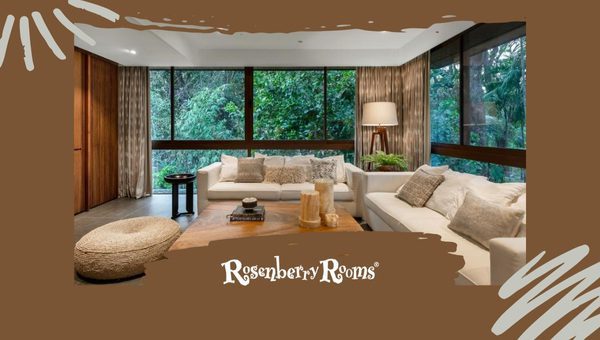
It is characterized by clean, crisp lines and a neutral color palette, often accented with bold colors and textures.
Furniture in contemporary spaces is sleek, with an emphasis on comfort and practicality. This style often incorporates the latest materials and technologies, resulting in spaces that are both stylish and functional.
Contemporary design is adaptable and versatile, able to blend with other design elements to create unique and personalized living spaces.
French Country style is a blend of rustic charm and elegant old-world aesthetics. It features warm, earthy colors, such as creams, yellows, and blues, reminiscent of the French countryside.
This style embraces distressed woodwork, vintage furnishings, and ornate decorative elements. Floral and toile patterns are common in fabrics, adding a touch of femininity.
The overall feel is cozy and welcoming, with an emphasis on lived-in comfort. French Country design creates spaces that are both rustic and refined, evoking a sense of timeless elegance and homely warmth.
Art Deco is a style that emerged in the 1920s and 30s, known for its opulent and glamorous aesthetic. It features geometric shapes, bold lines, and lavish ornamentation.
The color palette includes rich hues, metallics, and contrasting combinations like black and gold. Furniture is often streamlined yet decorative, with materials like chrome, glass, and mirrored surfaces.
Art Deco interiors are sophisticated and dramatic, incorporating elements of luxury and exoticism. This style is a celebration of modernity and elegance, creating spaces that are both visually striking and historically rich.
Midcentury Modern design, prominent from the 1940s to the 1960s, is celebrated for its sleek, clean lines and organic forms.
This style marries functionality with aesthetic appeal, featuring a palette of neutral and earthy colors with occasional splashes of bold hues.
Furniture pieces are iconic, characterized by their simplicity and fine craftsmanship, often made of teak, walnut, or rosewood.
The integration of indoor and outdoor spaces is a key aspect, with large windows and open floor plans.
Midcentury Modern design creates timeless, comfortable spaces that emphasize the beauty of simplicity and the harmony of form and function.
Eclectic interior design is a harmonious blend of varied styles, textures, and colors. It is the art of mixing and matching, creating a unique and personal space.
This style thrives on diversity, combining antique with contemporary and luxurious with modest. The color palette is vibrant and varied, allowing for personal expression and creativity.
Furnishings are a mix of different eras and origins, carefully curated to create a cohesive look. Eclectic design is all about tastefully breaking the rules, resulting in spaces that are as unique as the individuals who inhabit them.
Transitional interior design bridges the gap between traditional elegance and contemporary simplicity. It features a neutral color palette, creating a calming and sophisticated atmosphere.
The furniture combines the comfort and warmth of traditional style with the clean profiles and understated colors of the contemporary look.
Textures and fabrics are essential, adding depth and interest. Transitional design is all about balance and harmony, creating spaces that are timeless and serene, blending the best of both worlds to suit a modern lifestyle.
Explore More: 6 Best Murphy Beds With Closet [Maximize Your Space With Style]
Japanese interior design is rooted in the principles of Zen, emphasizing minimalism, simplicity, and the beauty of natural materials.
It features clean lines, neutral colors, and an abundance of natural light. Traditional elements like tatami mats, sliding doors, and wooden elements are prominent.
The design fosters a sense of peace and tranquility, with every object carefully chosen and placed. Furniture is often low to the ground, encouraging a connection with the earth.
Japanese design creates spaces that are not just visually appealing but also spiritually calming, embodying a philosophy of less is more.
Modern Farmhouse design combines the rustic, comforting charm of traditional country style with modern sensibilities. It features a palette of neutral and earthy tones accented with pastel colors.
Natural wood elements, exposed beams, and barn doors are common, alongside modern finishes and textures. The furniture is a mix of old and new, creating a cozy yet updated look.
Modern Farmhouse design emphasizes comfort and practicality, creating welcoming spaces that feel both familiar and fresh, perfect for a relaxed, contemporary lifestyle.
Retro Futurism captures the spirit of how the past envisioned the future, blending mid-century modern elements with futuristic design.
It features bold geometric shapes, vibrant colors, and a playful approach to materials and textures. This style often incorporates futuristic motifs and space-age designs, with a nod to the optimism and innovation of the 1950s and 60s.
Sleek lines and a mix of traditional and synthetic materials characterize furniture and decor. Retro Futurism creates spaces that are whimsical and imaginative, a nostalgic look at the future through the eyes of the past.
Urban Contemporary design is a cosmopolitan blend of modern and industrial elements. An open-plan layout, high ceilings, and an abundance of natural light characterize it.

The color scheme is usually a mix of neutrals with bold accents. Furnishings are sleek and modern, with an emphasis on comfort and functionality. This style often incorporates urban art, metal and glass materials, and minimalist decor.
Urban Contemporary design creates spaces that reflect the dynamic and fast-paced lifestyle of city living, offering a stylish yet practical retreat from the bustling urban environment.
The landscapes and cultures of the American Southwest inspire southwestern interior design. It features warm, earthy tones like terracotta, beige, and rust, complemented by vibrant blues and greens.
Natural materials such as wood, clay, and wrought iron are prominent. Southwestern style often includes handcrafted textiles, pottery, and Native American influences.
The design creates a warm, inviting atmosphere, reflecting the rugged beauty of the desert and the rich cultural heritage of the region.
Rustic interior design evokes the simplicity and rugged charm of rural living. It emphasizes natural, unfinished materials like wood, stone, and metal.
The color palette is earthy and warm, creating a cozy and comfortable atmosphere. Furnishings are sturdy and functional, often featuring a handcrafted look.
Rustic design often includes elements like exposed beams, stone fireplaces, and reclaimed wood, creating spaces that feel grounded and connected to nature, perfect for those who appreciate the raw beauty of the outdoors.
Chinese interior design is steeped in centuries of tradition, characterized by its balance, symmetry, and harmony. It features rich colors like red, gold, and black, symbolizing good fortune and happiness.
Ornate furnishings, intricate patterns, and detailed artwork are common. Feng Shui principles often guide the layout, emphasizing the flow of energy.
Silk, bamboo, and lacquered wood are typical materials. Chinese design is not just about aesthetics; it’s deeply connected to cultural values and philosophies, creating spaces that are both visually stunning and spiritually meaningful.
Greek Revival style harks back to the grandeur of ancient Greece, epitomized by symmetry, classic proportions, and grand columns.
This style often features a color palette of white and blues, reminiscent of the Aegean Sea and sky, accented with gold or bronze details. Interiors are spacious, with high ceilings, large windows, and detailed moldings.
Furnishings are typically elegant and refined, with an emphasis on quality materials and craftsmanship. Greek Revival design is about bringing the elegance and sophistication of ancient Greek architecture into modern living spaces, creating an aura of timeless beauty and grandeur.
Also Read: Ethan Allen Furniture Review 2024 [Style, Comfort & Durability]
Bohemian style is an eclectic and free-spirited approach to interior design, celebrating artistic expression and unconventional beauty.
This style is characterized by a mix of patterns, textures, and vibrant colors, often incorporating elements from various cultures and time periods.
Furniture is often vintage or handcrafted, with an emphasis on comfort and creativity. Bohemian spaces are typically filled with plants, books, and eclectic collectibles, reflecting a personal and unconventional aesthetic.
This style is less about following rules and more about creating a space that is uniquely expressive and joyously uninhibited.
The lush landscapes and vibrant colors of tropical regions inspire tropical interior design. This style features bright and bold colors, often with a dominance of greens, blues, and yellows, reminiscent of the sea, sky, and foliage.
Natural materials like bamboo, rattan, and teak are commonly used, along with tropical motifs and patterns.
Spaces are airy and light-filled, often with large windows or open layouts that blur the lines between indoors and outdoors.
Tropical design creates a relaxed and cheerful atmosphere, bringing the essence of a permanent vacation into the home.
Moroccan interior design is rich in color, pattern, and texture, reflecting the diverse cultural influences of North Africa.
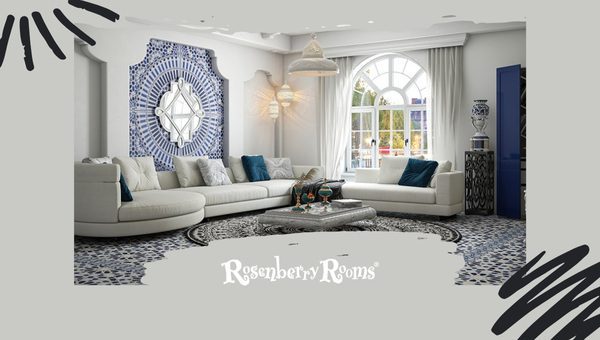
It features intricate tile work, ornate carving, and vibrant fabrics. The color palette includes deep reds, oranges, and blues paired with metallic accents.
Low seating, plush cushions, and detailed rugs are typical, creating a sense of comfort and luxury.
Moroccan design often incorporates arches and curves, with spaces that feel both intimate and opulent. This style is a sensory feast, full of warmth, color, and exotic charm.
Tuscan style is inspired by the rustic charm of Italy’s countryside, emphasizing warmth and comfort.
It features earthy tones like terracotta, olive green, and golden yellow, reflecting the natural landscape. Textures are key, with elements like rough plaster walls and wooden beams.
Furniture is robust and simple, often made of wood, stone, or wrought iron. Tuscan interiors often have an open, airy feel, with plenty of natural light.
This style creates a warm, welcoming atmosphere, combining the simplicity of rural life with a touch of Italian elegance.
Art Nouveau is a style that emerged in the late 19th century and is known for its organic lines, flowing curves, and intricate patterns. It features motifs inspired by nature, like leaves, flowers, and vines.
The color palette is soft and muted, with an emphasis on harmonious, natural tones. Elegant lines characterize furniture in this style and often includes intricate inlays or glasswork.
Art Nouveau interiors are both elegant and whimsical, creating spaces that feel like a work of art, celebrating the beauty and fluidity of the natural world.
Scandinavian design is characterized by its simplicity, functionality, and connection to the outdoors. This style features a muted color palette, with whites, greys, and blues, creating a calm and soothing atmosphere.
Natural light is a crucial element, augmented by minimalist yet cozy furnishings. Materials are natural and sustainable, with a focus on quality and craftsmanship.
Scandinavian design is more than just a style; it’s a lifestyle choice that values simplicity, functionality, and beauty in everyday life, creating spaces that are serene, uncluttered, and harmonious.
The relaxed lifestyle of beach living inspires coastal interior design. It features light, breezy color palettes with blues, whites, and sandy neutrals, creating a light and airy feel.
Natural light is abundant, with large windows and open layouts. Materials are often natural and rustic, like driftwood, seagrass, and linen.
Coastal design creates a relaxed and casual atmosphere, with a focus on comfort and ease. This style is about bringing the tranquility and beauty of the beach into the home, creating a serene and inviting space.
Cottagecore is a romanticized interpretation of rural living, characterized by its quaint and charming aesthetic.
This style features soft, pastel colors, floral patterns, and vintage or handcrafted items. It emphasizes coziness and comfort with plush furniture, layered textiles, and an abundance of natural materials.
Cottagecore interiors are whimsical and nostalgic, often including elements like fireplaces, exposed beams, and country-style kitchens.
This style creates a sense of escape and tranquility, evoking the simplicity and charm of a bygone era.
Farmhouse style is about simplicity and functionality, drawing inspiration from rural architecture and lifestyle.
It features a neutral color palette with whites, greys, and natural wood tones. Materials are rustic and natural, with an emphasis on reclaimed wood, stone, and metal.
Furniture is practical and sturdy, often with a handmade feel. Farmhouse interiors are cozy and inviting, with a focus on family and practical living.
This style combines the rustic charm of country living with modern comforts, creating spaces that are both welcoming and functional.
Explore More: 55 Beautiful Farmhouse Kitchen Decor Ideas [2024 Latest]
Contemporary Interior Design is a dynamic and fluid style that encapsulates modern living. It’s defined by its attention to clean architectural lines and a color palette grounded in neutrals punctuated by bold and vibrant accents.
This style integrates current design trends, making use of cutting-edge materials and innovative technology.
Furniture pieces are characterized by their sleek forms and emphasis on comfort. Contemporary interiors are spacious, with an open-plan layout often preferred.
This design ethos is about blending aesthetics with functionality, creating spaces that are both stylish and livable, reflecting the ever-changing tastes of the modern era.
Boho Chic is an eclectic and expressive interior design style that combines elements of bohemian and chic aesthetics.
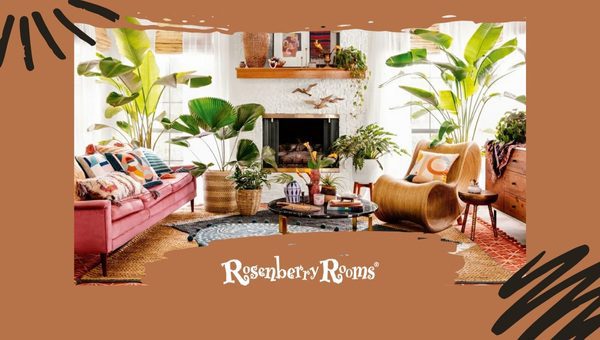
It’s known for its use of rich, vibrant colors, intricate patterns, and a variety of textures. This style often incorporates global influences, with Moroccan and Southwestern elements being particularly popular.
Boho Chic environments are layered with tapestries, vintage rugs, and an abundance of indoor plants, creating a laid-back and artistic atmosphere.
Furniture in this style is often vintage or upcycled, adding a unique and personal touch. Boho Chic celebrates individuality and a carefree spirit, making spaces feel both inviting and culturally rich.
Glam interior design, often referred to as Hollywood Glam, is synonymous with luxury and sophistication. This style exudes opulence through its use of plush fabrics, metallic finishes, and dramatic color schemes.
Mirrored surfaces, crystal chandeliers, and lush textiles are hallmarks of Glam interiors. The color palette is often bold, with black, white, gold and jewel tones dominating.
Furniture is typically oversized and plush, making a statement of elegance. Glam design is about creating a sense of extravagance and allure, often reminiscent of the golden age of Hollywood.
Mediterranean Revival is a unique style that draws inspiration from the countries bordering the Mediterranean Sea, particularly Spain, Italy, and Greece.
This style is characterized by its use of stucco walls, terracotta roof tiles, and wrought iron accents. The color palette is warm and earthy, featuring hues of terracotta, ochre, and azure. Interiors are often spacious, with high ceilings and archways.
Furnishings are rustic yet elegant, often made from wood and wrought iron. Mediterranean Revival design creates a warm, inviting atmosphere, evoking the charm and beauty of Mediterranean landscapes.
Hollywood Glam, also known as Hollywood Regency, is a design style that embodies the glitz and glamour of the golden era of Hollywood.
It features luxurious materials like velvet and silk, along with high-gloss finishes and mirrored surfaces. The color palette is typically bold, with black, white, and metallics playing a significant role.
Furniture in this style is opulent and often includes tufted and upholstered pieces. Hollywood Glam interiors are dramatic and sophisticated, creating a sense of timeless elegance reminiscent of classic Hollywood cinema.
Boho Minimalism is a unique fusion of bohemian and minimalist design principles. It combines the free-spirited and eclectic nature of Boho with the clean, uncluttered aesthetic of minimalism.
This style emphasizes a neutral color palette, with pops of color and pattern brought in through textiles and accessories.
Natural materials, like wood and linen, are key, along with plants and handcrafted items. Furniture is simple yet functional, often with a vintage or artisanal touch.
Boho Minimalism creates a serene and relaxed space that is both stylish and practical.
Modern interior design refers to a style that emerged in the early to mid-20th century, characterized by its emphasis on simplicity, clean lines, and functionality.
The color palette is often monochromatic, featuring shades of white, black, and grey. Materials such as steel, glass, and concrete are commonly used, reflecting the industrial age. Furniture in this style is sleek, with an emphasis on form following function.
Modern design avoids excessive ornamentation, focusing instead on the balance of form and function, creating spaces that are both aesthetically pleasing and livable.
Art Moderne, also known as Streamline Moderne, evolved from Art Deco and is characterized by its emphasis on streamlined, aerodynamic forms.
This style often features curved walls, chrome hardware, and glass block windows. The color palette is usually soft and neutral, complementing the sleek and smooth surfaces.
Furniture pieces are functional yet stylish, often with rounded edges and a glossy finish. Art Moderne design embodies a sense of speed and efficiency, reflective of the technological advancements of the era, creating spaces that are both futuristic and elegant.
Retro interior design celebrates styles from the 1950s to the 1970s, bringing back the charm and vibrancy of these eras.
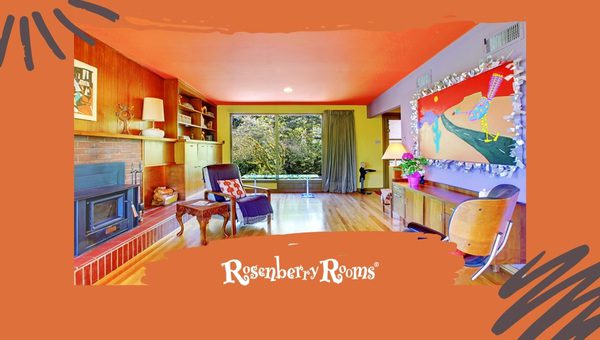
Bold patterns, colorful palettes, and a mix of different materials and textures characterize it. Furniture pieces are often vintage or vintage-inspired, featuring designs like tapered legs and geometric shapes.
The Retro style is playful and nostalgic, incorporating iconic elements like lava lamps, shag carpets, and pop art.
It’s about creating a fun, lively atmosphere that pays homage to the past while being firmly rooted in the present.
Nautical interior design, also known as coastal or beach style, is inspired by the seaside and maritime elements.
It features a light, breezy color palette with blues, whites, and sandy tones. This style often includes elements like striped fabrics, wood paneling, and marine-themed decorations such as ropes, anchors, and shells.
Furniture is usually casual and comfortable, made from natural materials like wood and wicker. Nautical design creates a relaxed and refreshing atmosphere, evoking the tranquility and beauty of the beach and ocean.
Minimalist interior design is the epitome of the ‘less is more’ philosophy, focusing on simplicity, clean lines, and a monochromatic color palette.
It strips away excess, leaving only the essential elements to create a sense of tranquility and order. Furnishings are sleek and functional, with no ornate details, emphasizing quality over quantity.
The use of space is key in Minimalist design, with open, uncluttered rooms that feel serene and spacious.
This style not only reflects a design choice but also a lifestyle, promoting a clutter-free, organized environment that emphasizes the beauty of simplicity.
Postmodern interior design is a playful and eclectic style that emerged as a reaction against the rigidity of modernism.
It is characterized by its mix of different styles and eras, bold colors, and unusual shapes. This style often incorporates irony and paradox, with a preference for asymmetry and contrasting design elements.
Postmodern interiors might feature a mix of traditional and contemporary furniture, pop art, and unconventional materials.
It is about breaking the rules and conventions, resulting in spaces that are unique, whimsical, and reflective of individual personality.
Also Read: 10 Best Daybed Mattresses of 2024 [Guaranteed Comfort And Style]
Traditional interior design draws inspiration from a variety of historic styles, emphasizing elegance, comfort, and symmetry.
This style often features classic furniture with intricate details, rich wood tones, and luxurious fabrics like silk and velvet.
The color palette is typically warm and inviting, with deep reds, greens, and blues. Decorative accents such as molding, wainscoting, and ornate light fixtures are common.
Traditional design creates a sense of warmth and familiarity, offering a timeless aesthetic that is both elegant and approachable.
Artisanal interior design celebrates craftsmanship and the uniqueness of handmade items. This style incorporates bespoke furniture, handcrafted textiles, and artisanal decor pieces, often sourced from local makers or global artisans.
The color palette and materials are inspired by nature, with a focus on organic, sustainable elements. Artisanal design is more than a visual style; it’s about storytelling and the connection to the people and processes behind the objects.
Spaces designed in this style are warm, authentic, and full of character, reflecting a deep appreciation for craftsmanship and cultural heritage.
Vintage interior design is a nostalgic style that embraces the charm and elegance of the past. It often includes furniture and decor from a specific era, such as the mid-century or the Victorian period, creating a sense of timelessness.
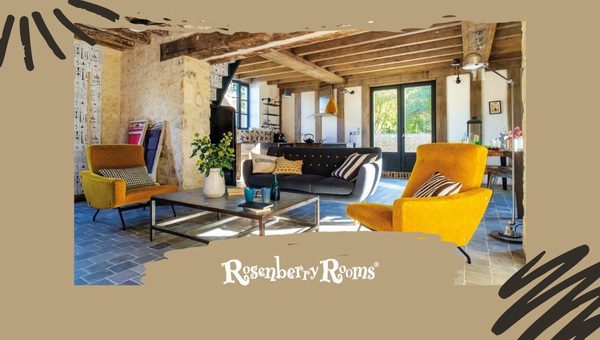
This style mixes old and new, with vintage pieces complemented by modern accents. The color palette can vary, often featuring muted tones that evoke a sense of history.
Vintage design is about cherishing the past, creating spaces that feel both familiar and unique, with each piece telling its own story.
Traditional design, often confused with ‘classic,’ offers a timeless aesthetic rooted in heritage and comfort. It emphasizes symmetry, rich color palettes, and a variety of textures and patterns.
Furnishings in this style are often ornate, with an attention to detail that includes carved wood and decorative trim.
Fabrics like brocade, silk, and velvet add a touch of luxury. Traditional spaces are warm and welcoming, with a layout that encourages conversation and togetherness.
This style represents a bridge between the past and present, offering a sense of continuity and timeless elegance.
Hollywood Regency is a design style that epitomizes the glamour and luxury of Hollywood’s golden era. Bold color choices, metallic and glass accents, and luxurious fabrics like satin and velvet characterize it.
This style incorporates dramatic and ornate decorative elements with a flair for the theatrical. Furniture is often sleek and glossy, with a focus on elegant silhouettes.
Hollywood Regency creates spaces that are both luxurious and inviting, with a touch of drama and sophistication that echoes the allure of classic Hollywood.
Shabby Chic is a design style that embraces a worn, lived-in look, combining rustic charm with soft, feminine touches. It often features distressed furniture, vintage fabrics, and a pastel color palette.
This style blends the old with the new, creating a cozy, romantic atmosphere. Decorative accents include floral patterns, lace, and soft, plush textiles.
Shabby Chic is more than a design aesthetic; it’s about creating a warm, welcoming space that feels both chic and comfortably imperfect.
French Provincial design is inspired by the styles found in the French countryside, particularly in the 17th and 18th centuries.
It combines rustic simplicity with refined elegance. The color palette is typically soft and muted, with an emphasis on natural tones.
Furniture is characterized by curved lines and ornate detailing, often in a distressed finish. This style includes toile fabrics, ornamental woodwork, and an overall sense of old-world charm.
French Provincial design creates a warm, inviting atmosphere, blending the rustic with the sophisticated in a uniquely French way.
Indian interior design is a vibrant and richly diverse style, reflecting the cultural richness of India. Bold colors, intricate patterns, and an abundance of decorative details characterize it.
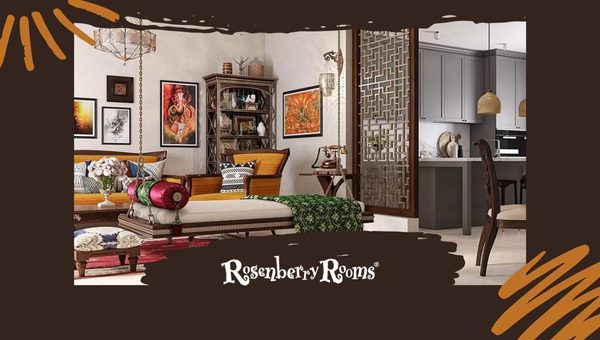
Traditional Indian interiors often feature hand-carved wooden furniture, colorful textiles, and ornamental accessories. Motifs such as paisleys, mandalas, and animal figures are common.
This style also incorporates elements like jali screens and traditional Indian art. Indian design is about creating a warm, inviting space that is rich in color and texture, offering a sensory feast that is deeply rooted in the country’s artistic heritage.
Explore More: 20 Best Microfiber Sofas In 2024 [Luxury Comfort Meets Style]
Some of the most popular interior design styles include Midcentury Modern, Scandinavian, Bohemian, and Contemporary. Each of these offers a unique aesthetic and mood for your space.
Yes, Traditional and Scandinavian styles are considered timeless rather than trendy. They consist of classic elements that have proven to stand the test of time in interior design.
Absolutely! This is often referred to as the Eclectic or Fusion style, where different elements from various design styles come together. It’s key to strike a balance to avoid a cluttered look.
Minimalist, Scandinavian, and Modern Farmhouse are some of the easier-to-implement styles for beginners. They focus on simplicity and functionality and have plenty of resources available for inspiration.
Consider your lifestyle, preferences, and the architecture of your home. Also, think about what colors, textures, and furniture you are drawn to. Researching various styles can also provide valuable insight into what resonates with you.
Now that we’ve unpacked an extensive list of design styles, it’s over to you to select the one that truly speaks to your personal taste and lifestyle.
Whether it’s the clean lines of Scandinavian minimalism or the cozy charm of French Country, your perfect interior style is likely included in our top 50.
Interior design is more than just visual appeal – it’s about creating spaces that comfort and inspire you. No matter which style you choose, let it be a reflection of you because after all, your home should tell your story.